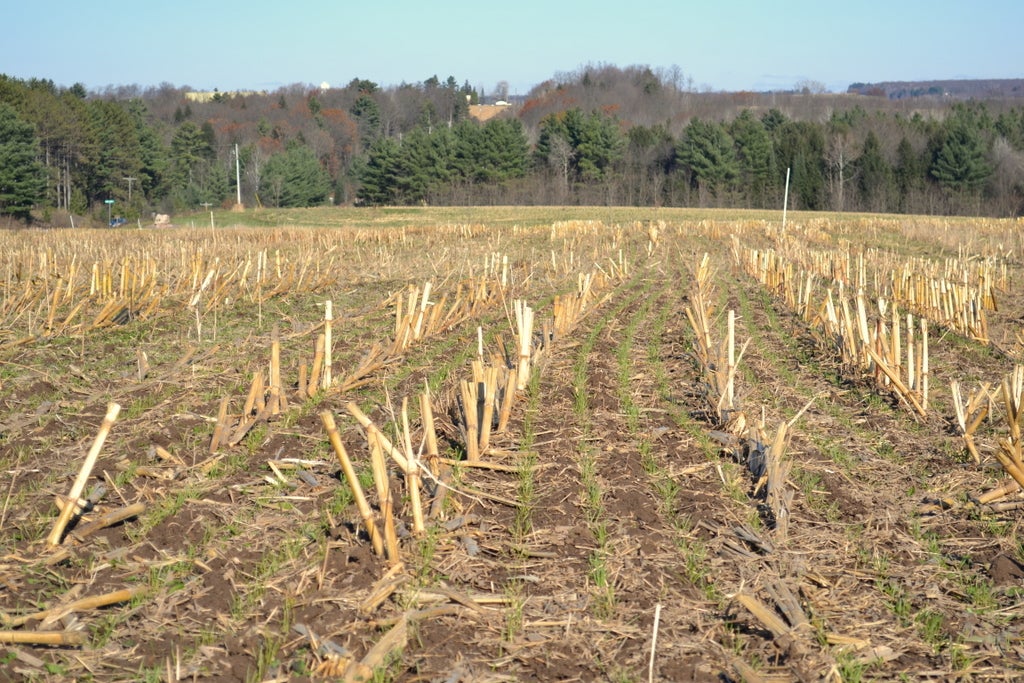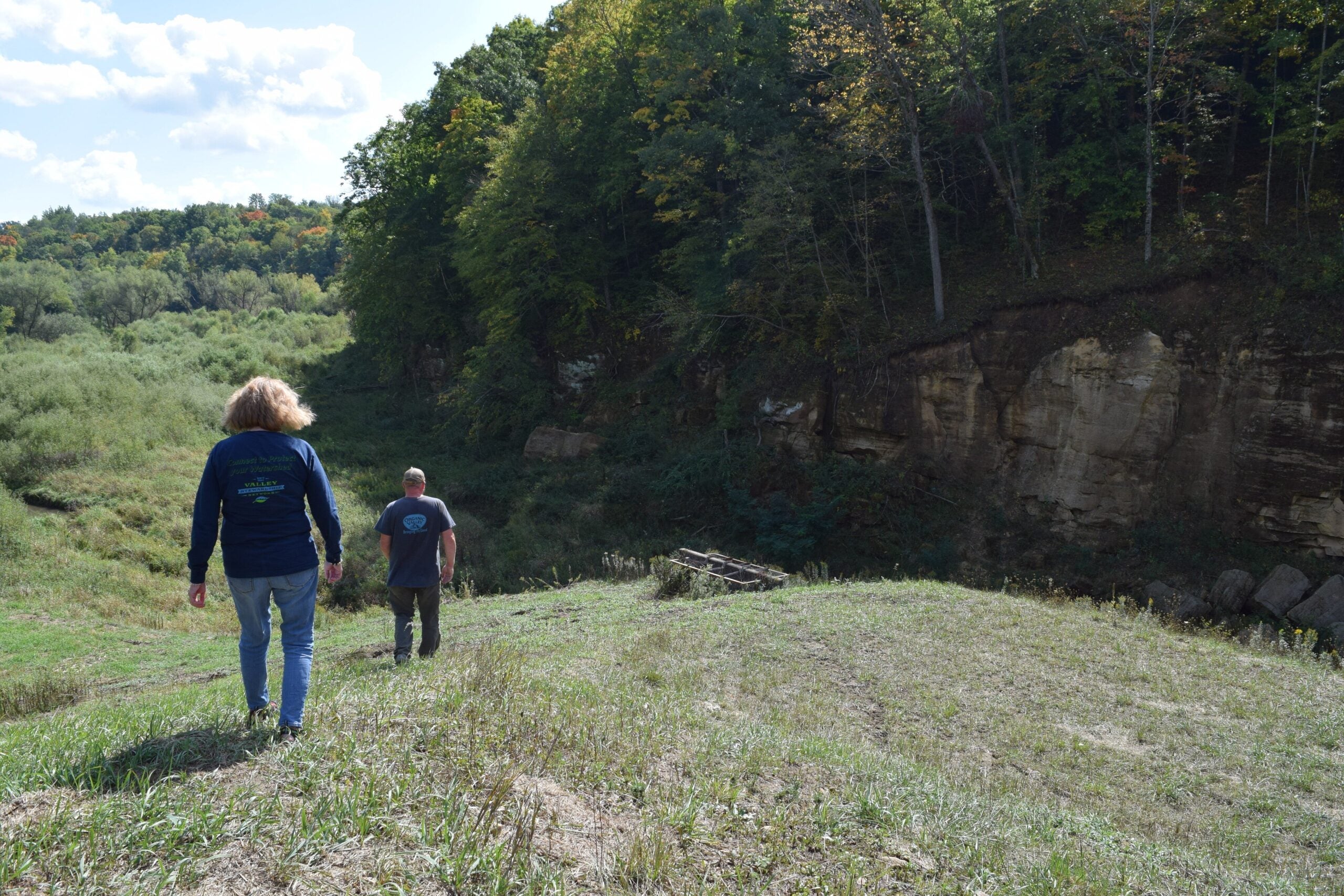Wisconsin, like the rest of the United States, has made great strides in soil conservation since the dust bowl years of the 1930s — when drought and poor farming practices led to the loss of millions of acres of topsoil.
But 80 years later, scientists say some of that progress is being reversed and threatened by climate change.
As Woody Guthrie was singing his dust bowl ballads and former President Franklin Roosevelt warned “a nation that destroys its soils, destroys itself,” historian Jerry Apps was growing up on his parent’s farm in Wild Rose.
Stay informed on the latest news
Sign up for WPR’s email newsletter.
“I recall from my childhood the dust storms that visited this part of Wisconsin. They were fierce. They were terrible. They were dramatic, and they raised all kinds of havoc,” Apps said.
The aftermath of those storms is still visible in the central sands region of the state in the form of pine tree rows planted north to south on the borders of farm fields.
“It was then that people saw the need to try and plant wind breaks, trying to stop the winds blowing from the west and tearing up the sandy soil and moving it east,” Apps recalled.
Some scientists say climate change is bringing drought and dust storms back to the western states. In July, researchers at Princeton University and the National Oceanic and Atmospheric Administration’s Geophysical Fluid Dynamics Laboratory published a report that predicts, “climate change will increase dust activity in the southern Great Plains from spring to fall in the late half of the 21st century.”
But in Wisconsin, the warming climate is instead producing more frequent heavy rain, according to a 2011 report by the Wisconsin Initiative on Climate Change Impacts.
The study predicts, “soil erosion in Wisconsin could more than double by 2050 compared with the 1990s, as a result of predicted changes in hydro-climate.”
Soil erosion is already a problem. According to the study, 31,574 tons of soil were estimated to have eroded from Wisconsin fields in 2003, amounting to an average for the entire state of more than 3 tons per acre.
The statistic alarms Don Radtke, farm operations manager, and Steve Krueger, crop science instructor at Northcentral Technical College’s Agriculture Center for Excellence.
Crop Science Instructor Steve Krueger, left, and Farm Operations Manager Don Radtke of Northcentral Technical College’s Agriculture Center for Excellence. Glen Moberg/WPR
“Three tons is a pretty big pile of soil, correct? It takes a long time to replace it,” Krueger said. “So what we’re really trying to do is not ship all of our dirt down the Mississippi River and put it in the delta, because that’s where it ends up.”
Radtke said he worries about the erosion caused when too much rain falls too quickly, regardless of the cause.
“When you have a 9 inch rain event in three hours, is that climate change or is that just the weather?” Radtke asked. “Once the soil is saturated, it’s almost like falling on cement or blacktop, it’s going to run off, and that’s where the erosion starts.”
The Agriculture Center for Excellence is a working farm and hands-on classroom north of Wausau. Glen Moberg/WPR
Students at the Agriculture Center for Excellence — a working farm and hands-on classroom north of Wausau — are learning about the benefits of stopping erosion. The working farm has joined the Soil Health Partnership, an initiative of the National Corn Growers Association, with the goal of preserving and improving topsoil.
“If you’ve got a handful of soil, you’ve got 10 billion creatures living in it,” Krueger said. “So if we can put something in the soil, some kind of a root structure to keep it there, it just makes my 10 billion animals a lot happier, because they’re the ones that break down the nutrients and make them available for the plants to grow.”
To preserve root structure and stop erosion, the Agriculture Center is teaching the farmers of tomorrow about no-till and cover crop agriculture. With no-till farming, the soil isn’t plowed between harvests from year to year. Instead farmers use special tools to plant seeds each year without disturbing soil ecosystems.
“You don’t dig up the ground before you plant,” Radtke said. “We have special planters that have a disc on the front that will open the soil, put the seed in place, and pack it in place without disturbing the rest of the soil.”
In addition to no-till techniques, cover crops — usually planted after the fall harvest — also protect from erosion.
“When we take our corn off we usually put a cover crop of some type on just so there’s something always growing in the soil. We try to plant winter wheat or winter rye that will survive over the winter,” Radtke said.
On a demonstration field at the farm, even on a cold November day, tender green shoots of winter wheat could be seen poking up between the rows where corn had been harvested. The corn stalk stubble and plant residue remained in place.
Although only about 20 percent of the farms in Wisconsin use no-till and cover cropping techniques, the idea is beginning to catch on.
John Eron, who farms 800 acres in Portage County and leads the county’s farm bureau, said the practices are saving him money.
“We want to keep as much nutrients in soil on the land, where it’s at. Obviously as a farmer we don’t want to see runoff and see fertilizer that we’ve spent money to apply … leave our property,” Eron said. “We’re not digging up the soil in fall and we’re not digging it up in spring.”
Krueger believes that like the windbreaks that followed the dust bowl years, new planting and harvesting techniques can keep soil in place even if Wisconsin is heading toward a wetter climate.
“When we look back to the great dust bowls you’ll see a lot of pine tree rows to try to keep the soil down,” Krueger said. “What we’re doing with this whole process is we’re putting something on top of the soil to make sure it doesn’t move.”
Krueger said that makes sense regardless of what the future holds.
“I can’t control climate change, but we can control erosion just through our farming practices,” he said.
This story is part of a yearlong reporting project at WPR called State of Change: Water, Food, and the Future of Wisconsin. Find stories on Morning Edition, All Things Considered, The Ideas Network and online.
Wisconsin Public Radio, © Copyright 2024, Board of Regents of the University of Wisconsin System and Wisconsin Educational Communications Board.





